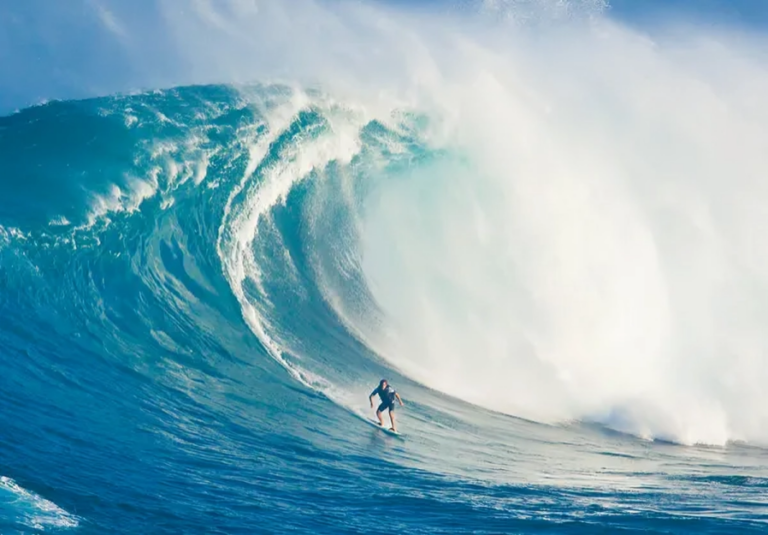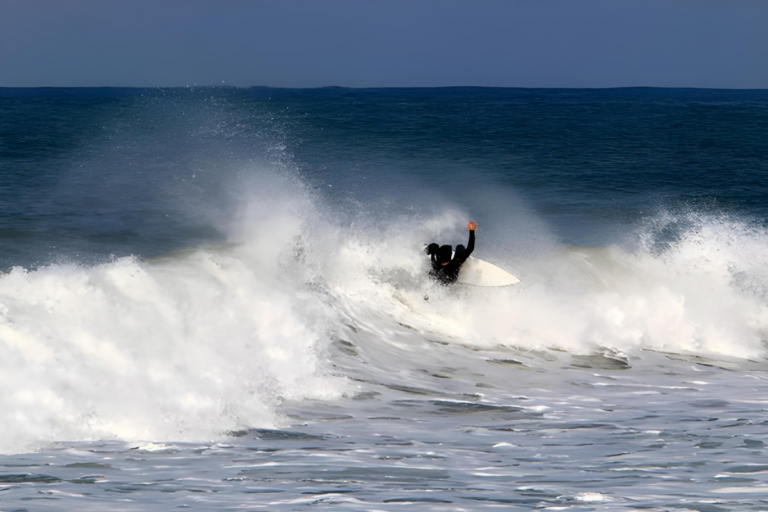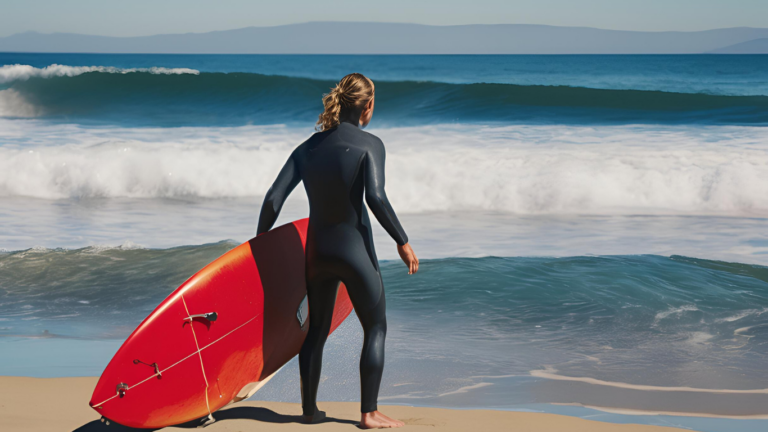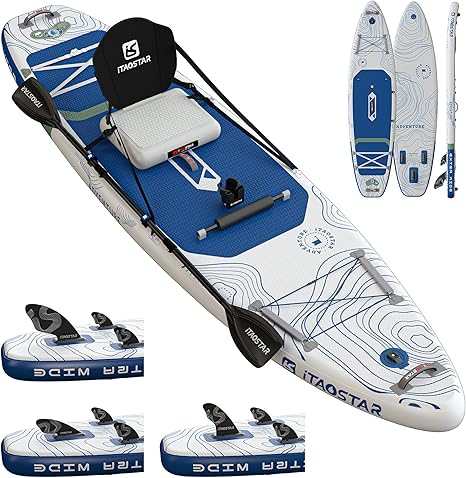Boogie Board Surfing: A Fun and Accessible Way to Hit the Waves
Boogie board surfing or body surfing is a highly common water sport that has gained popularity due to it being very easy and enjoyable for most individuals. For the beginner, boogie boarding is a fun way to hit the surf with less of a learning curve then with traditional surfing.
In this guide we’ll explore what boogie board surfing is, why it can be the perfect beginner’s activity, the equipment necessary for boogie boarding, the basic techniques involved in boogie boarding, important safety precautions to take while boogie boarding, and some of the best locations for a first boogie boarding experience.
What is Boogie Board Surfing?
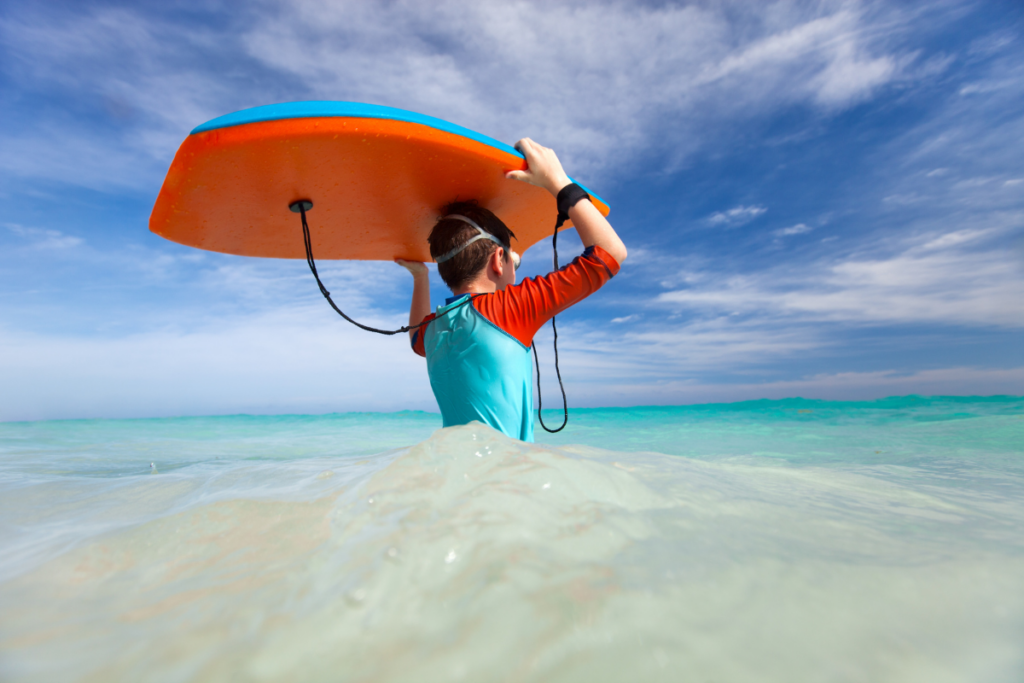
Boogie board surfing, also known as body surfing involves riding waves using a miniature and lighter version of a traditional surfboard usually with dimensions of around 37-43 inches. It can also be distinguished from surfing which involves standing on the board as opposed to boogie boarding where the individual sits or kneels on the board in the water.
Developed in the 1970s by Tom Morey, boogie boarding is now a favorite hobby for many, together with an actual sport. It has a shorter board and is closer to the water, so beginners do not have to struggle with balance issues that are present in traditional surfboards.
Why Boogie Boarding is Great for Beginners
If you are interested in water sports and do not fancy surfing or are simply afraid to get onto a surfboard, boogie boarding is a great choice. Here’s why:
- Ease of Use: A great advantage with boogie boarding is that one does not have to stand on the board to ride the waves, something that makes its learning easier especially for beginners.
- Lower Risk of Injury: Because you are relatively close to the water’s surface sports related injuries such as falling are less likely to occur than in regular surfing.
- Accessible for All Ages: Age factor is not a constraint while boogie boarding; all age groups, including children, teenagers, adults, and old people can easily boogie board. No complex athletic demands associated with the activity, so it will be suitable especially for families with children.
- Less Expensive: Boogies are much cheaper than actual surfboards, and you don’t really require anywhere near as many accessories.
Essential Gear for Boogie Board Surfing
So as to maximize the experience of boogie boarding, it is important that you acquire the right equipment. Here’s what you’ll need:
- Boogie Board: More preferable is a board which suits the size and the weight available with you. When you place it upright the width of the board should extend to your midsection or a bit below your belly button.
- Swim Fins: Fins help you to initiate yourself into the wave and they also provide you with much needed control once in the water. In selecting the fins, pay attention to the foot pockets and the drainage capability of them.
- Leash: As for safety equipment, a leash is attached to your wrist or upper arm so that the board won’t run away if you fall off.
- Wetsuit or Rash Guard: According to the water temperature, wearing a wetsuit for warmer or rash guard so that the skin will not experience friction with the board.
- Wax: Occasionally rider groups use wax on the board specifically to increase grip and thus ensure they do not fall off when riding.
Basic Techniques to Get You Started
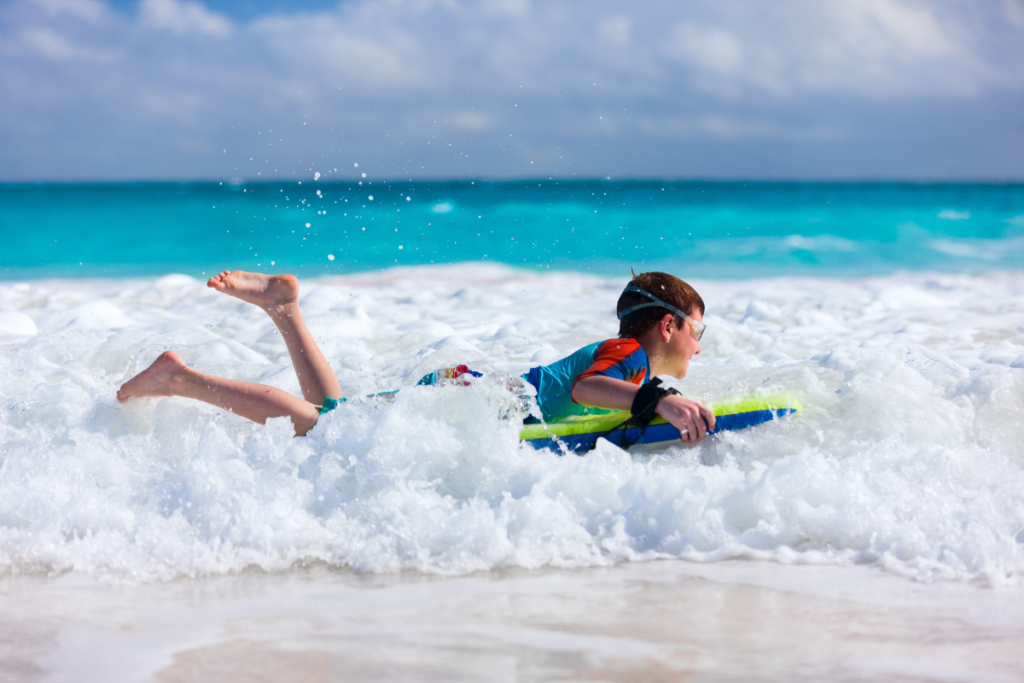
Learning the fundamental techniques of boogie boarding can enhance your experience and make your time in the water more enjoyable. Here are some beginner-friendly tips:
- Positioning on the Board: It is always advisable to be in the middle of the board when paddling out. Your chin should be resting just above the top of the board, and your hands should rest along the side of the board loosely.
- Paddling Out: Kick your swim fins and with the legs to propel you forward and paddle with your arms to swim in water. If the waves are big enough, just lie on your board while surfing them.
- Catching a Wave: To catch a wave, paddle with utmost force using your arms and legs to get up to the speed of the wave or even go past it. As the wave engages your board, shift forward slightly and maintain balance and direction by your body.
- Steering and Control: Get your hands and body involved in moving the board in a certain direction. Simply tilt the body to the left in order to move to the left and tilt the body to the right to scoot to the right.
- Riding the Wave: That’s it if you catch a wave just sit back and enjoy the ride. If you need to increase or reduce your speed, transfer your weight from one foot to the other.
Safety Tips for Boogie Boarding
Safety should always be a top priority, especially for beginners. Here are some key safety guidelines to follow:
- Know Your Limits: It is recommended to begin with small waves before moving up to the larger and more imposing waves. Be sure to take care of yourself and be conscious of what your body can and cannot do.
- Check Local Conditions: You should before going out look for any flags, signs, or any warning that may be posted at the beach. Don’t forget about dangers such as rip tides or jellyfish.
- Stay Clear of Surfers: Another important safety measure to consider is to make sure you steer clear of the regular surfers especially if the zone you are boogie-boarding is used by the traditional surfer.
- Use a Leash: Riding a board requires you to wear a leash that will ensure that the board stays around your when you end up wiping out.
- Don’t Go Alone: First-time boogie boarders should always go out with a buddy and inform someone on the beach as to what your intentions are.
Best Places to Try Boogie Boarding for the First Time
First-timers particularly should know that location is rather crucial when it comes to boogie boarding. Some factors that may be important when selecting the best places for beginners are the wave size and nature, water depth, and the reception of the beach.
Here are some of the top locations around the world where you can enjoy your first boogie boarding experience:
Waikiki Beach for Hawaii Waikiki is for those who prefer gradual waves which are good for surfing lessons. Beach is on the major attractions lists for the tourists so there are several outlets where they rent boogie boards and also several trainers are available who shall provide the necessary training on how to ride this boogie board.
This has to do with the benefits of gentle breaks which make it more suitable for learners wanting to master some basic water skills.
Bondi Beach, Australia – A must visit Beach in the world, Bondi beach is good for novice surfing due to its consistency and the atmosphere of the place.
For yet another feature, it is an ideal place for those intending to take their beginner’s boogie boarding or surfing session and there are many surfing schools one can attend to get a lesson.
Santa Monica Beach California – Santa Monica is famous for the regular seaside and the broad coastlines of sand. For first-timers in boogie boarding, it offers small to medium-sized size that helps one learn some basics in boogie boarding.
A great thing about this beach is that it is rather close to Los Angeles providing an excellent option of a weekend getaway.
Newquay – Cornwall, UK The newbie and family friendly waves of Cornwall inUK specifically to the Newquay coast. Some schools in the area offer surfing as well as boogie boarding lessons and the nature around the area also enhances it.
The great advantage of Cornwall is the fact that it is possible to practice in a nice and quiet environment.
Cocoa Beach, Florida – Known for its mellow waves, Cocoa Beach provides an ideal setting for beginners. The gentle surf and warm water make it an excellent location for first-time boogie boarders.
Plus, it’s home to the famous Ron Jon Surf Shop, where you can pick up all the gear you’ll need.
Noosa Main Beach, Australia – If you’re down under, Noosa is another fantastic beach for beginners. The beach has gentle waves that are perfect for learning, and the atmosphere is welcoming for all ages. Plus, it’s located near Noosa National Park, providing a stunning backdrop for your beach day.
Ocean City, Maryland – For those on the East Coast of the US, Ocean City offers consistent waves that are perfect for novices. The family-friendly beach offers plenty of boogie boarding opportunities, and the surrounding boardwalk adds extra fun to your day at the beach.
Each of these beaches is renowned for its beginner-friendly waves, making them perfect for your first boogie boarding adventure. Be sure to check the local conditions before heading out, and consider taking a lesson from a local instructor to get the most out of your experience.
Conclusion
Boogie board surfing is an enjoyable, low-barrier way to engage with the ocean and catch some waves. With the right equipment, a focus on technique, and a safety-first mindset, you’ll find that boogie boarding is a thrilling water sport suited for anyone.
Whether you’re on vacation or making this your new hobby, boogie boarding opens up endless opportunities for fun in the sun. Now, grab your board, head to the beach, and start your boogie boarding adventure today!
By following this guide, you’ll not only enjoy your time in the water but also avoid common beginner mistakes, and before long, you may even be ready to tackle more advanced waves. So, what are you waiting for?
Ready to start surfing? Learn the essentials with our beginner’s guide.
